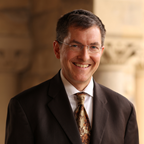Stanford has always embraced educational change, but not for its own sake. Instead, we have pursued reforms in response to specific problems or to realize definite possibilities. In that sense, our curricular innovations seek to move purposefully from what is to what might be. Such purposeful change is guided by underlying values grounded in our commitment to a broad liberal education model. We want our students to develop disciplinary knowledge, skills, and abilities (KSA), but also ways of thinking and knowledge beyond their specialized fields. We want their education to profit them individually, and also to position them to help their communities and the wider world. Our dual goal of disciplinary KSA in concert with a broad liberal education does give rise to tensions. After all, university study with an exclusively disciplinary focus (as is normal in European higher education), or with a purely liberal arts orientation (offered in many smaller U.S. colleges) could easily fill an entire undergraduate experience. In this essay, we offer some historical and contemporary examples of educational change at our University. Each illustrates the inherent tension at the heart of Stanford’s ongoing efforts to situate engineering education within liberal education—a tension that calls for innovative thinking and approaches.
AUTHORS
|
|
|
|


